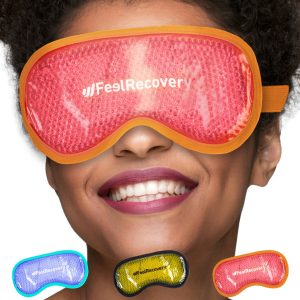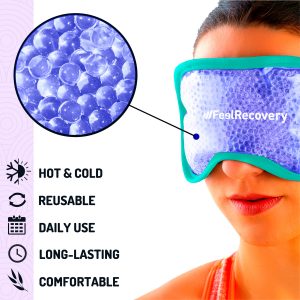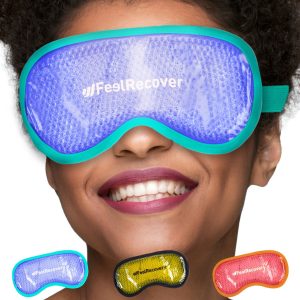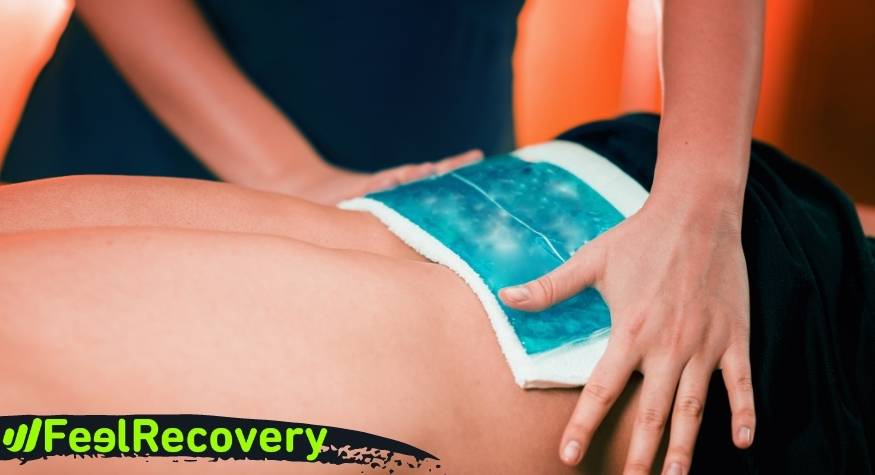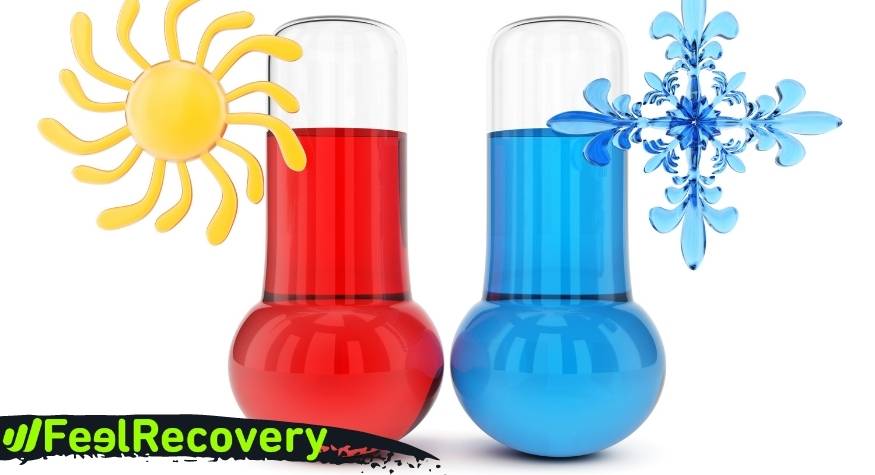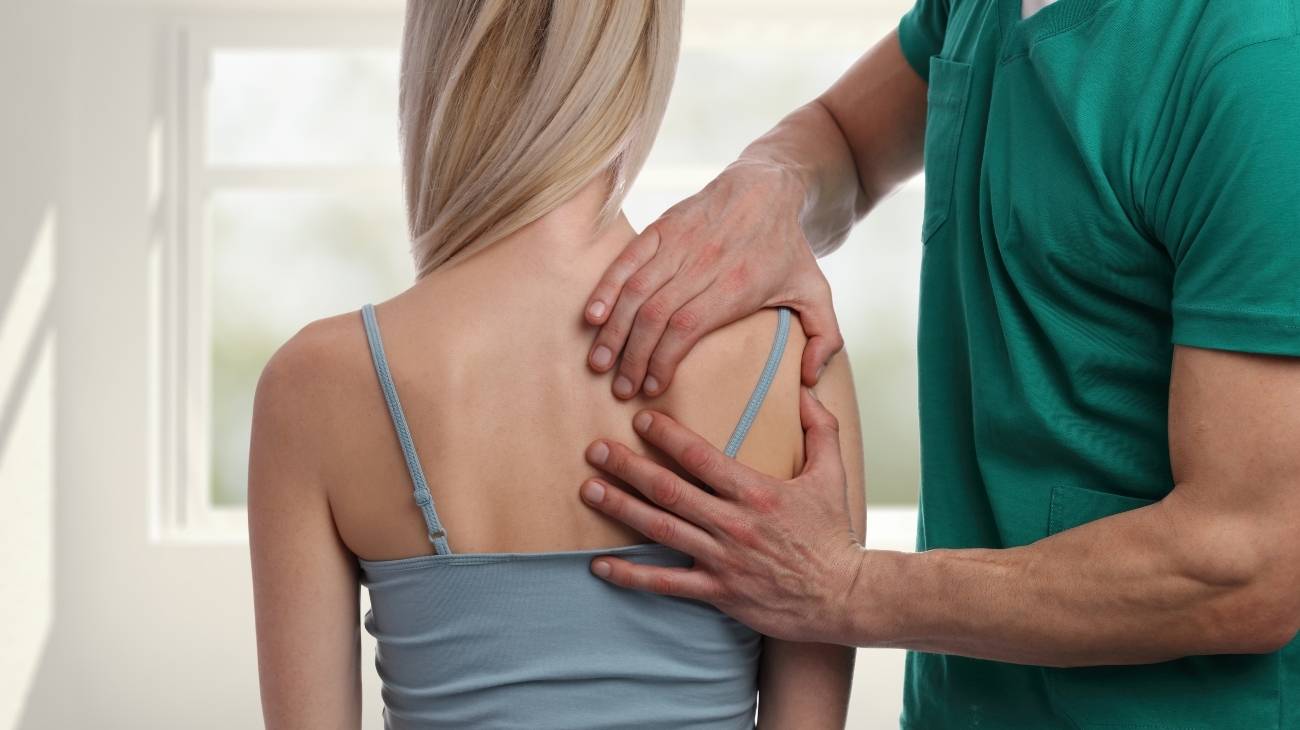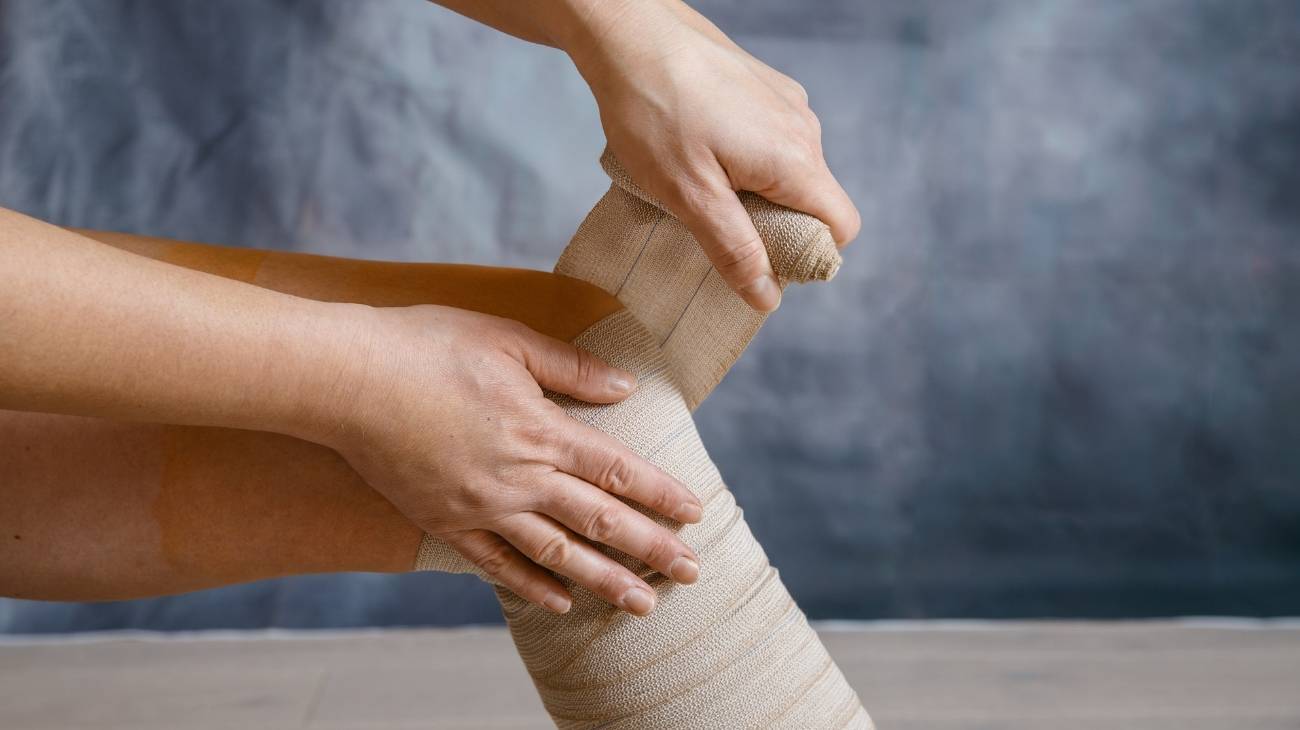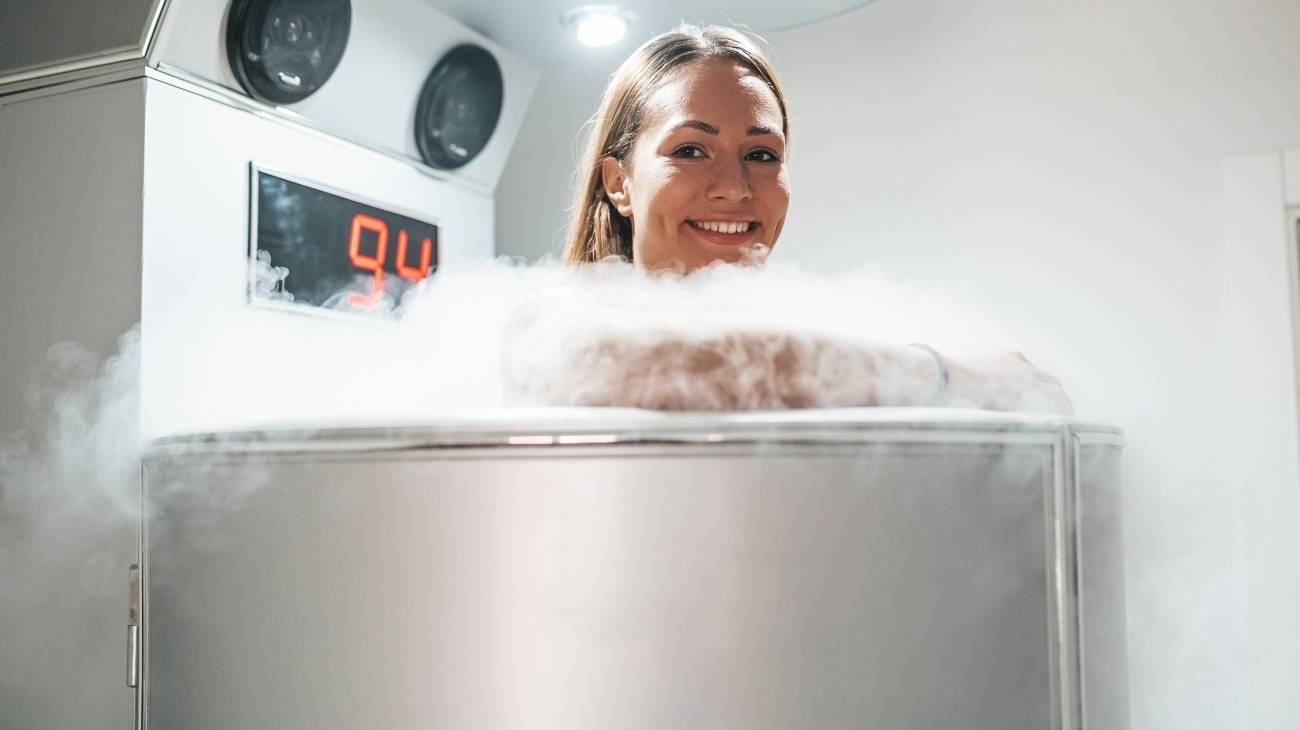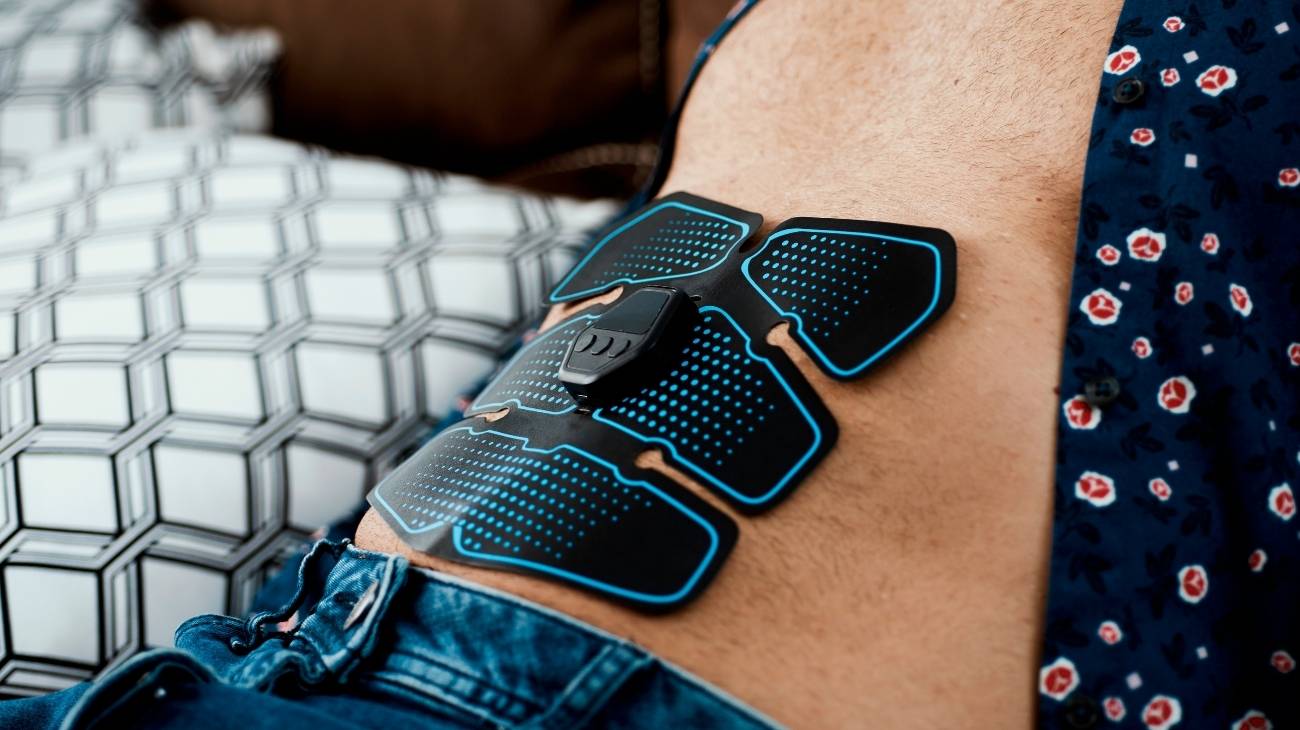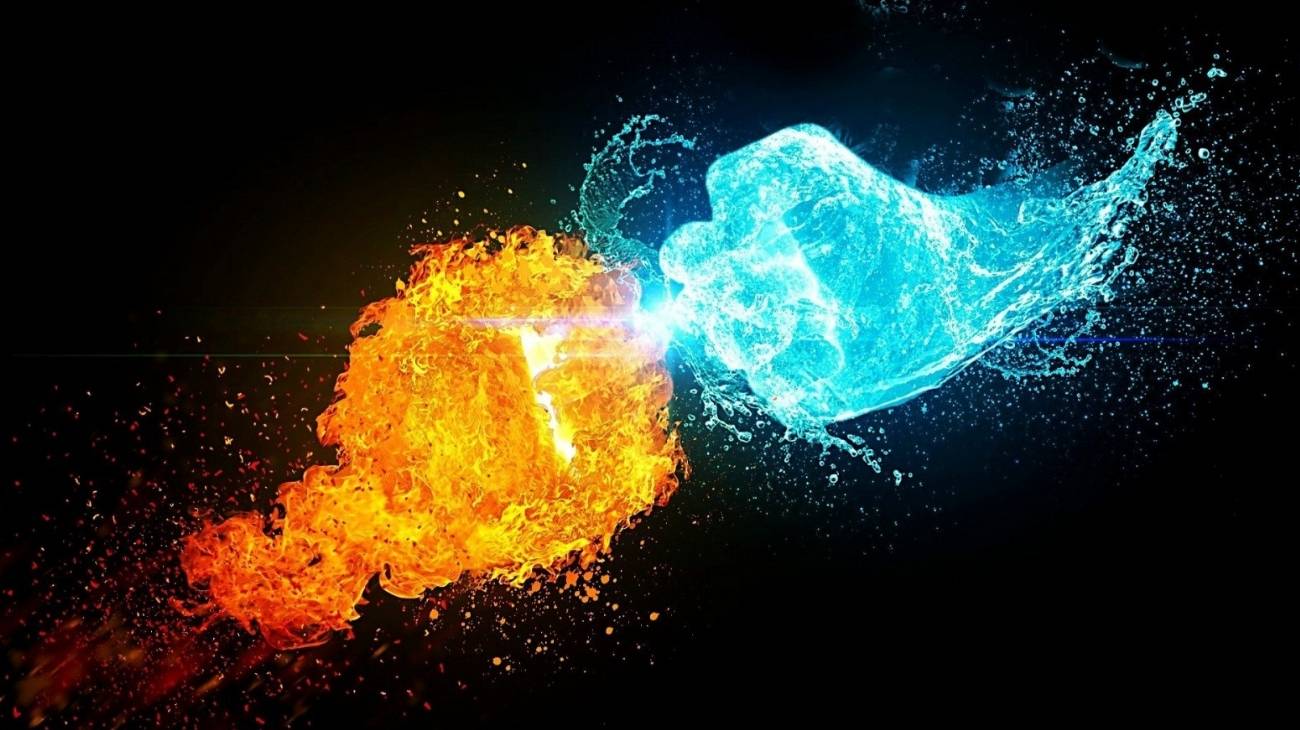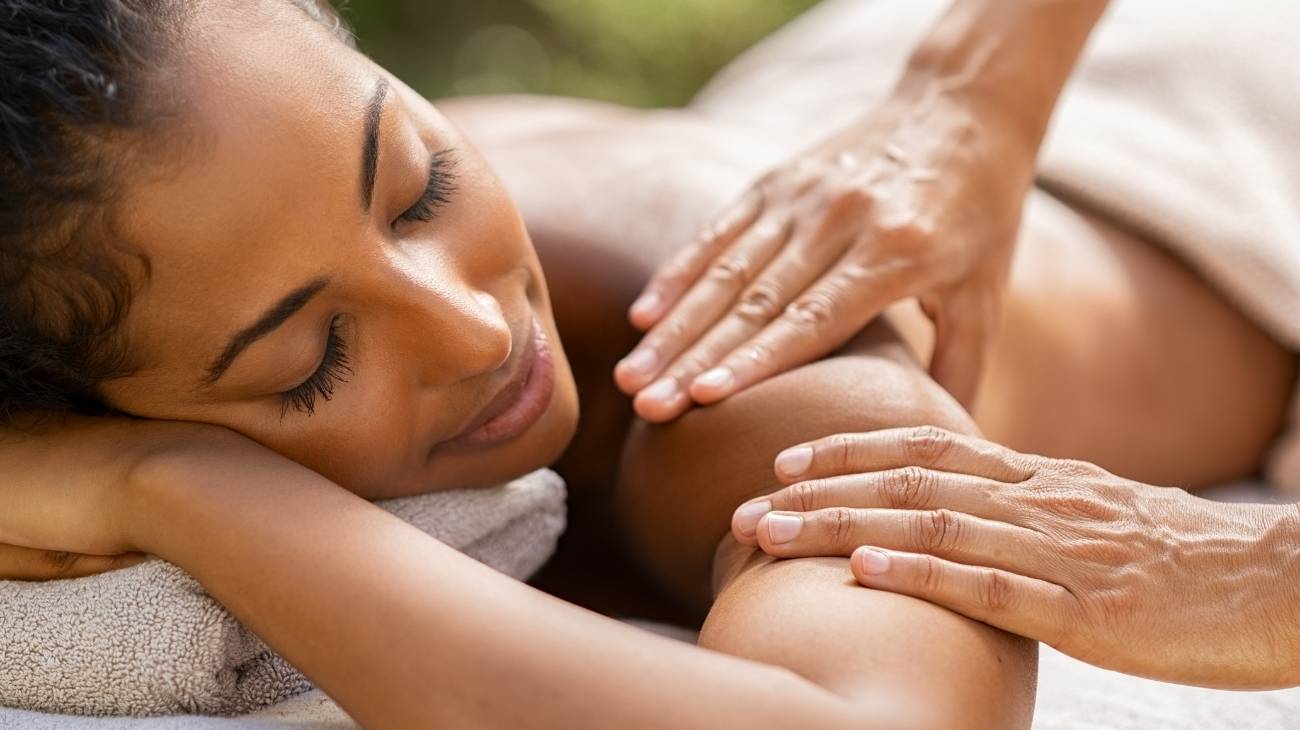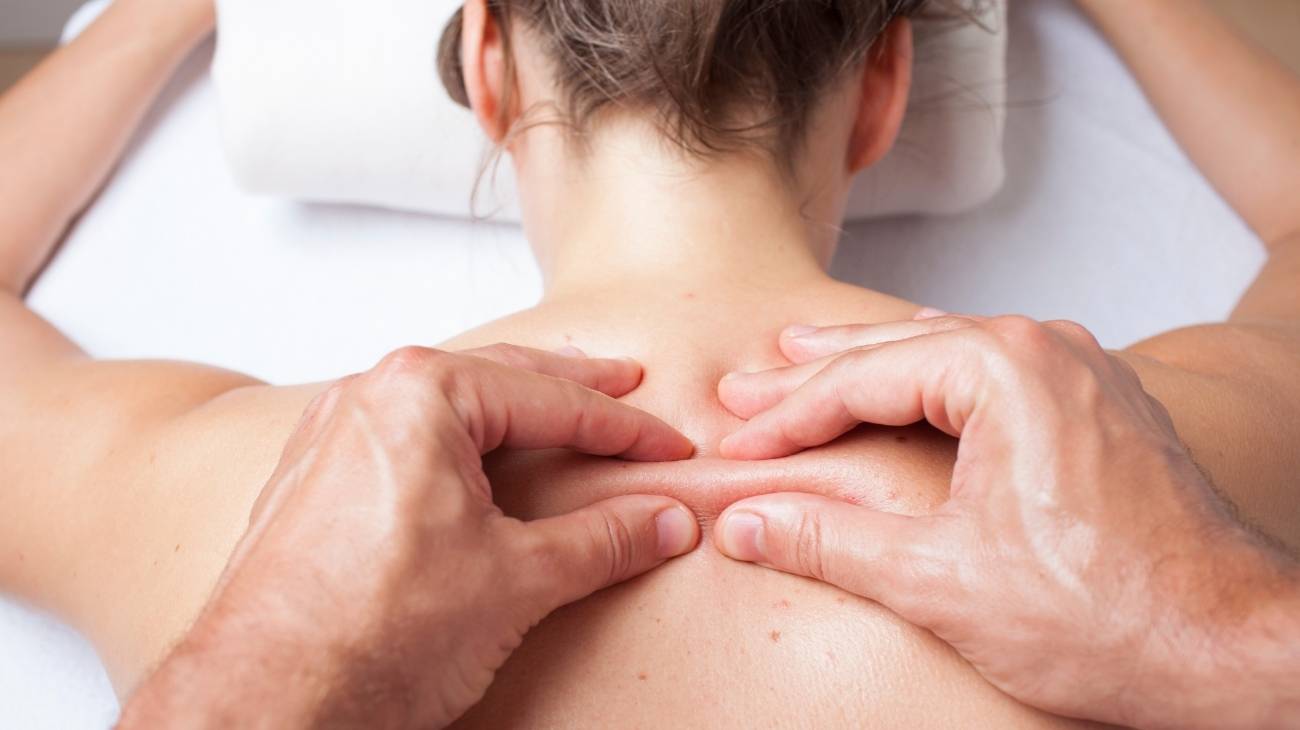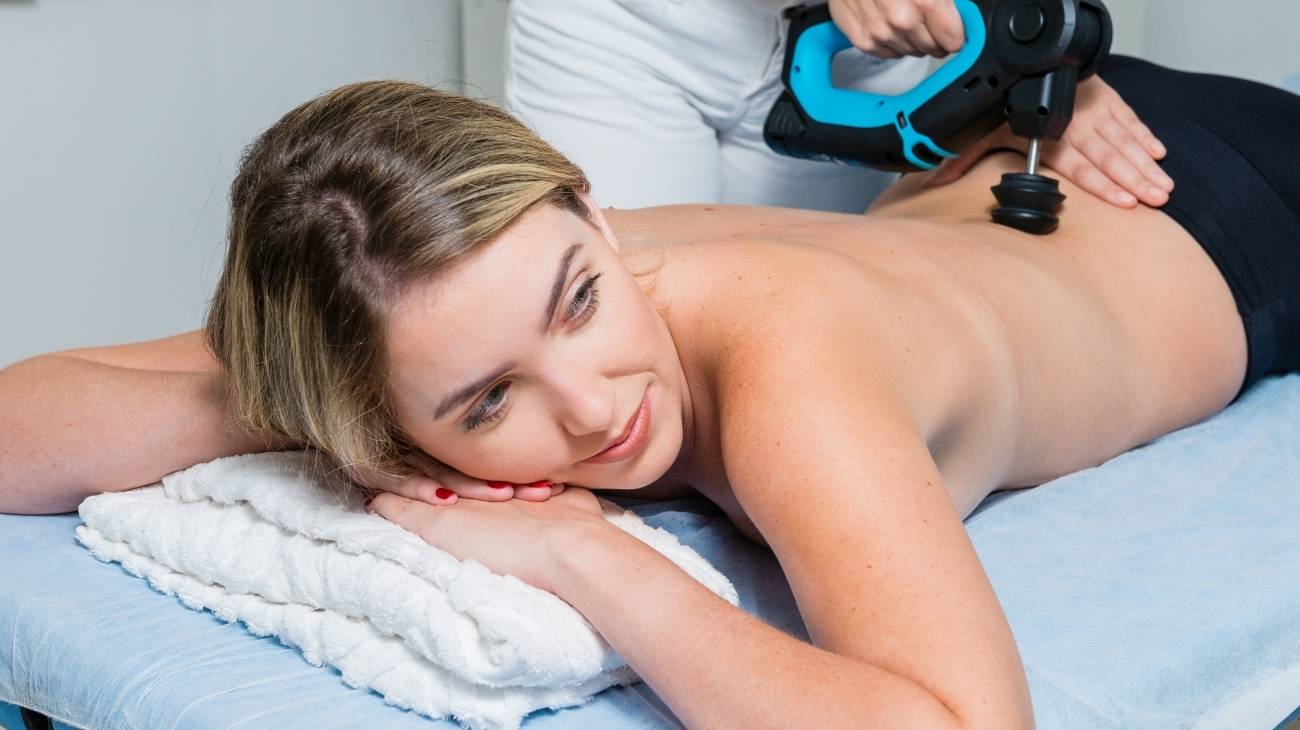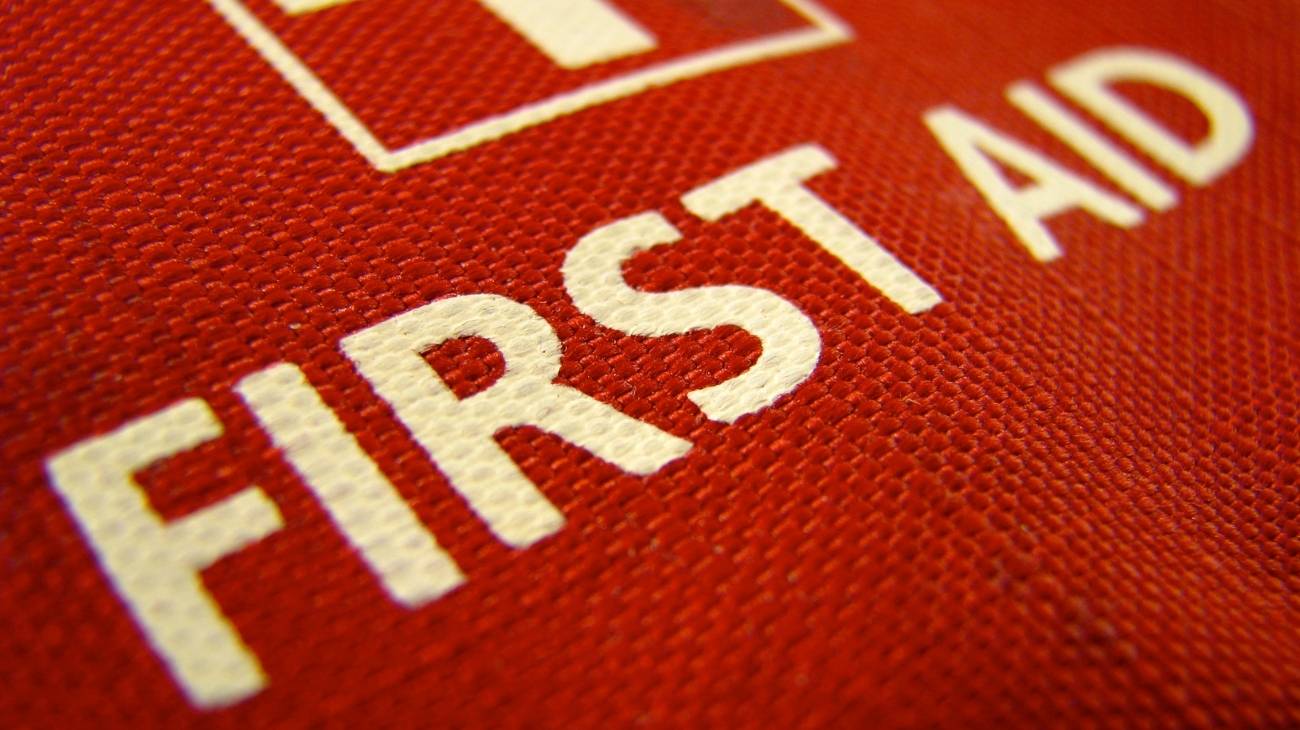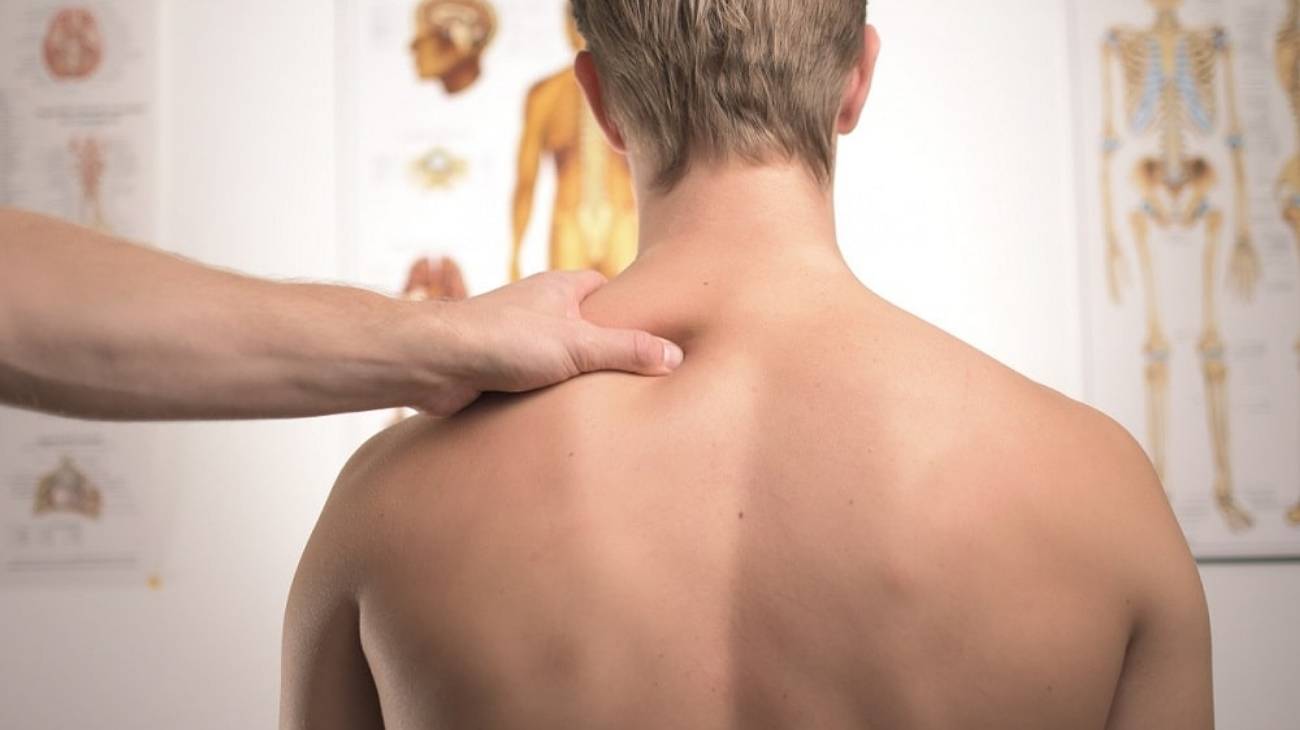- What is cryotherapy and what is it used for in physical therapy?
- What are the health benefits and positive effects of applying cold?
- What types of techniques are used to apply cryotherapy for best results?
- How to apply cryotherapy for injury recovery?
- What are the indications and contraindications for applying cold?
- Cryotherapy and thermotherapy; What are the advantages of using cold and heat together?
- F.A.Q: Frequently Asked Questions
Cryotherapy, a resource for health professionals for the treatment of different temporary or chronic pathologies. In our case, we are interested in how physiotherapists use cryotherapy to treat physical ailments by reducing inflammation, although its applications, as we say, are much more widespread.
Find out exactly what cold application therapy is, what it is for and what its benefits are, indications and contraindications and, of course, the different ways in which it is carried out to recover from injuries, including its application in conjunction with heat.
What is cryotherapy and what is it used for in physical therapy?
Cryotherapy is the application of cold to our body for beneficial purposes. The concept is formed with the prefix cryo-, which literally means cold, or also ice cream, and with the root-therapy, which consists of the complete treatment of a problem. Thus, we can say that it is a method to treat certain problems and conditions using low temperature as a resource for it.
Its use has been recorded since the 15th century BC, when the first written document was drawn up, in which cryotherapy was mentioned as a resource used, among other things, in recovery procedures. This is the Edwin Smith papyrus, publicly displayed in New York.
During a session, we will notice cold, pain (usually very bearable), paresthesia or pricks, burning and numbness. This cooling effect can be achieved in various ways, reducing these to convection, conduction or evaporation.
This technique is carried out medically at all levels. Thus, we find from cryotherapy in dermatology to physiotherapy, including, for example, cryotherapy on legs or cervical cryotherapy. Moreover, there is even cryosurgery in the post-operative period.
We also find this to be true in other cases. Since the 18th century A.D. the term aesthetic cryotherapy has been used, in which we include cryotherapy for slimming or facial cryotherapy.
With this, we can say that cold therapy is good for a lot of things:
- Removing a wart or acrochordon.
- Recovering after a muscular-skeletal effort.
- Accelerating the metabolism.
- Increasing sports performance
- Reduce inflammation after impact or exertion.
- Relief of pain.
- Numbness.
- Activation of the fibroblasts, which are responsible for generating collagen.
- Favouring sleep.
- Release of serotonin and endorphins.
Cryotherapy in physiotherapy
One of the fields in which this procedure is most often used and which is of interest to us is physiotherapy. We can basically differentiate between three situations:
- Treatment of an acute injury: Due to its different benefits, which we will now see in detail, it is an ideal resource for treating acute injuries that have just occurred in muscles and joints. The cold manages to considerably reduce inflammation, relieves pain and, in addition, makes recovery, in general, faster.
- Therapy: It is possible that from a poorly healed injury, from the wear and tear, from an accident or after an operation, to give some examples, you may end up needing physiotherapy that goes beyond just getting a little cold at home. On this occasion, cryotherapy will form part of other points of the therapy, being one more resource among many that the professional considers. In the end, the aim is the same, to calm the pain, the swelling, the spasms... but always within a more complex context.
- Sports cryotherapy: Although there is a lot of disagreement about this, it is true that many physiotherapists propose the use of cold before practising sports activities, especially ice baths, to increase the performance of the athletes. You gain speed, power and also resistance, so it takes longer to get tired.
It is also used, as you can imagine, to recover from the effort when the practice is over. In this case, it is ideal for the muscles, which are the ones that return to normal at maximum speed. Depending on the need, you can use ice gel packs or even cryotherapy cabins or ice baths in water with ice.
Bestseller
-
Gel Eye Mask for Puffy Eyes (Gold/Black)
$11.95 -
Gel Eye Mask for Puffy Eyes (Orange/Pink)
$11.95 -
Gel Eye Mask for Puffy Eyes (Purple/Turquoise)
$11.95 -
Ice Pack for Foot - Cold Therapy Socks (Black)
$24.95 -
Ice Pack for Foot - Cold Therapy Socks (Green)
$24.95 -
Ice Pack for Foot - Cold Therapy Socks (Pink)
$24.95
What are the health benefits and positive effects of applying cold?
The effects that the application of cold has on our health are mainly due to the reduction of the temperature:
- Temperature: Obviously, we are applying elements of considerably lower temperature. In addition, the vasoconstriction that also occurs makes it difficult for the area to acquire more temperature.
- Tissue metabolism: Change in the rhythm of the tissue cells.
- Blood flow: The blood fibres are reduced, which means that there is less blood flow.
- Inflammation: Because of the above, it is obvious that the area will deflate quickly.
- Oedema: By modifying the tissue metabolism, oedemas can be alleviated to a great extent, seeking to return everything to normal.
- Pain: The nerves send to the brain the signal of cold rather than pain).
- Spasticity: The nerves become numb.
- Muscle relaxation: Derived from all of the above.
The basis of cryotherapy is muscular relaxation and, of these effects, we can consider considerable benefits.
In addition to the obvious ones that we have already explained, such as recovery or improvement of an injury, rehabilitation, etc. (which are also the best known), we can discover how cold is applied with a lot of intentions. Many of them are achieved with more or less success and others really not only do not occur, but end up achieving a damage.
Some effects of the use and benefits of the application of cold are:
- Reduction of eye bags.
- Elimination or blurring of dark circles under the eyes.
- Reduction of headache.
- General relaxation.
- Improvement of burns.
- Improvement of psoriasis and other skin diseases.
- Elimination of spots on the skin.
- Prevention of acne.
- Delayed signs of aging.
What types of techniques are used to apply cryotherapy for best results?
There are various forms of application, the best known and most effective is when we apply cold locally and systemically.
In the case of local application, we find resources such as:
- Cryomassage.
- Vaporizers.
- Refrigerating gases.
- Aerosols.
- Sprays.
- Cold compresses.
- Cold pads.
- Orthoses.
- Cold water immersions.
As for systemic applications, we have:
- Wraps, with or without mud.
- Ice baths.
- Cold chamber.
Special mention should be made of cryosurgery, which, as you can imagine, is a surgical procedure carried out at frozen temperature with the aim of destroying abnormal tissues. We have seen it a lot in problems of the uterus (and cervix) and tumours in general as well as in malignant melanomas.
How to apply cryotherapy for injury recovery?
We have already seen that in physiotherapy, this resource can be used for different purposes. Let's see, according to this, which cryotherapy methods are most useful in each case.
- Massage: This is carried out after exercise to relax and reposition the muscles in case of possible micro displacements as well as to promote relaxation. Blood perfusion increases elasticity and the mechanical action causes uric and lactic acid to drain. It is done with an ice pack attached to a tongue stick or other, with a bag of ice or gel packs (and with gloves so as not to be exposed to the cold). Both longitudinal and circular movements should be made. In the case of oedema, the movement should ideally be centripetal. We should stop at the moment when the skin is numb.
- Cold-packs: Bags filled with cold gel are, for direct contact, the safest and most effective option, as they allow very low temperatures to be applied without the risks of direct contact with ice. They are applied directly to the area after being put into action (generally requiring a click or similar). They must remain in this up to 20 minutes. With considerable rest, you can repeat the action up to eight times a day. In this case, they are recommended for swelling and pain, as they do not work to relax the muscles, etc. In desperate cases, you can use a bag of peas or other small frozen products (to fit the shape of the injured area).
- Cold hydromassage baths: An intense but balanced and fast way of doing cryotherapy in physiotherapy. It is usually done in rehabilitation, for example, because of the need to exercise in the water. It should be a short bath and always finish if there is numbness.
- Contrast baths: These are carried out by alternating immersions in cold water tanks (between 8 and 15 degrees) and hot water (between 39 and 42). These sessions can last up to 20 minutes and you will always stay in the hot water longer. It is the same when the inflammation is in a sub-acute point.
- Cryotherapy cabins: We are exposed to much lower temperatures, but not by direct contact but in the form of gas, reaching almost -200 degrees. The aim is to release chemical substances with anti-inflammatory and analgesic capacity.
What are the indications and contraindications for applying cold?
We have already seen many examples where the use of cold on the skin can be beneficial. However, we want to make it clear when it is indicated.
Indications
- Stimulation of the muscles: In rehabilitation processes and before practicing highly demanding sports.
- Reduction of swelling: In the case of acute injuries, vasoconstriction, which narrows the capillaries, will reduce the inflammation of the affected area. This, in turn, causes the pain to diminish.
- Elimination of bronchospasm: This is a little known use but for which cryotherapy is really indicated.
- Analgesia: Prolonged exposure to cold makes the pain in the area to be reduced (not felt) because it starts to lose sensitivity.
- Contusion or trauma: The cold will be your best ally if you can apply it immediately after the accident.
- Headache: The headache decreases due to the numbness of the nerves and the feeling of well-being when the temperature of a warm skin is reduced (this is generally the case when we suffer from this condition).
- Abrasions: Before scabs form, we can apply cold to an abrasion or wound to enjoy the benefits mentioned above and help healing.
- Ice burns: Curiously, if it can be endured, a burn produced by ice can be successfully treated with even more cold.
- Rheumatic problems: In cases of tendinitis, arthrosis or bursitis, an effective reduction in inflammation is achieved.
- Elimination of skin lumps: With nitrogen we can make flat, seborrheic or vulgar warts disappear, contagious molluscs, plantar papillomas, acrochordons, senile lentigines...
- Muscle spasms: The relaxation of the area and the numbness will make these significantly reduce and even disappear.
Contraindications
Despite, as we have seen, offering benefits on a number of occasions, the truth is that this technique is not indicated in certain situations:
- Hypersensitivity: Obviously, those who suffer from hypersensitivity to touch, hives or even those who are allergic to cold are not candidates for this type of treatment. Of course, we should never apply cold if we suffer from pyoderma gangrenosum, as the sores are guaranteed.
- Vasoconstriction: The application of cold means that the capillaries and other blood vessels are constricted. If this is already happening on a regular basis, we should discard this idea completely or we could suffer from lack of blood flow. We include from people with Raynaud's syndrome or disease already diagnosed to any other who suffers this constriction temporarily as a symptom of another disease, because of a treatment, etc.
- Hypertension: Although it does not have to be, the truth is that, sometimes, applying cold to us in a professional way can mean that the blood flow increases. This can alter a person's tension, increasing it.
- Thromboembolism: For the same reason, if you think you have blood clots or you have a history of them, you should let the professional know, as it is probably much more appropriate to use another technique to relieve pain or reduce inflammation.
- Insufficient platelets: It is understandable that for the same reason we should not undergo this method of relief if we have any disease or there is a circumstance where we have a lower than normal amount of platelets.
- Any other form of blood dyscrasia and actions and problems in this. In general, if we suffer alterations in both the quantity and quality of the elements that make it up, we should not make it the objective of this therapy. The same applies, for example, if you undergo dialysis or suffer from cryoglobulinaemia (here you can consult and carry out the therapy depending on the general level of the disease and how and why you need to put cold in your body.
- Malignant and histological lesions: If you know or even doubt whether you are suffering from a malignant lesion, you will have to proceed with another type of relief therapy. The same applies if it requires a histological (tissue) diagnosis.
- Cancer or myeloma: Although cold helps muscle regeneration, the same cannot be said for cells. Thus, the impact it can have on the tumour areas is not yet known.
- Pregnant or lactating women: As in the previous case, as there is no knowledge of possible contraindications, this is a group that should not, at first, be subjected to cold treatment. In any case, consultation with an expert for each specific case is always the most appropriate option since body cryotherapy does not have very intense effects throughout our body.
Of course, its abuse or misuse can lead to harmful circumstances. What can happen, among many other things, is that exposure to low temperatures over a long period of time:
List of derived risks:
- Break the cell membranes in the area of the dermis where it is applied.
- Makes the lipoproteins lose their properties.
- Constricts and distends the vascular threads.
- Makes the capillary permeability increase.
- It also favours thrombi.
- The flow of blood to the heart is reduced.
- Necrosis can even occur.
Side effects
Sometimes, a series of more or less serious effects or complications can occur, even if the treatment is carried out correctly. Of course, this is not usual and it does not have to be all of them.
- Pain: There are areas much more prone to pain, such as the lips, cuticle of the skin on the nail. pulpejos, helix...
- Modification of the skin's qualities and tissue defects: Change of colour, ulceration, appearance of blisters, oedemas in lax areas, scars, milia etc
- Neuronal alteration: Nerves can atrophy from excessive exposure to cold. It is easier in areas such as skin nerves (fibula, mandibular angle, ulna...), space between the fingers, in the distal phalanges... Be careful because this effect can be permanent.
- Permanent alopecia: Because of the atrophy of the hair bulb.
- Gas insufflation: If liquid nitrogen reaches the subcutaneous cellular tissue during treatment of an ulcer.
- Syncope: On rare occasions, due to excess cold (or inability to endure it), histamine shock or circumstances arising from other treatments.
- Haemorrhage: This may occur, exceptionally, when applied to "open body" areas. Obviously, this occurs in extreme medical cases treating very difficult problems, it has nothing to do with the application of cold in physiotherapy.
- Delayed bleeding: This would occur if we are treating venules or thromboses.
Cryotherapy and thermotherapy; What are the advantages of using cold and heat together?
Thermotherapy consists of applying heat to areas of the body with certain conditions or injuries. In some cases, the aim is to alleviate symptoms similar to those we also attack with cold, although this does not always have to be the case. In fact, there are totally opposite indications for both methods of work.
In any case, cold/heat therapy, which alternates both elements in the same session, has a series of benefits in certain cases:
- Muscle nutrition: With the high temperature we manage to feed the muscle which, with cold alone, we know would lose water. The subsequent cold removes dead cells and toxins. We repeat so that there is again a blood supply, as is logical, and to receive oxygen again. We start with heat and continue alternating up to five times to give ourselves three applications with each therapy, each lasting three minutes. With this, the muscle, as well as greatly reducing pain, helps to restore muscle strength.
- Rheumatism: Both cryotherapy and thermotherapy act on the pain, so by avoiding situations in which they are not inadvisable, we can enjoy a significant reduction in pain. The clearest case is rheumatism.
- Headache: Have you never known whether to put on something cold or something hot? This is because both have positive effects. On the one hand, the blood supply helps everything to return to normal as soon as possible and oxygenates the brain. On the other hand, the cold reduces pain and numbs the nerves which, when disturbed, are sending out signals of punctures, spasms or pain.
By using them alternatively, the possibilities are multiplied, as we say, provided that the application of cold or heat is not counterproductive in the situation in which we find ourselves.
F.A.Q: Frequently Asked Questions
References
- Hohenauer, E., Taeymans, J., Baeyens, J. P., Clarys, P., & Clijsen, R. (2015). The effect of post-exercise cryotherapy on recovery characteristics: a systematic review and meta-analysis. PloS one, 10(9), e0139028. https://journals.plos.org/plosone/article?id=10.1371/journal.pone.0139028
- Crystal, N. J., Townson, D. H., Cook, S. B., & LaRoche, D. P. (2013). Effect of cryotherapy on muscle recovery and inflammation following a bout of damaging exercise. European journal of applied physiology, 113(10), 2577-2586. https://link.springer.com/article/10.1007/s00421-013-2693-9
- Swenson, C., Swärd, L., & Karlsson, J. (1996). Cryotherapy in sports medicine. Scandinavian journal of medicine & science in sports, 6(4), 193-200. https://onlinelibrary.wiley.com/doi/abs/10.1111/j.1600-0838.1996.tb00090.x
- Olson, J. E., & Stravino, V. D. (1972). A review of cryotherapy. Physical Therapy, 52(8), 840-853. https://academic.oup.com/ptj/article/52/8/840/4589463
- Meeusen, R., & Lievens, P. (1986). The use of cryotherapy in sports injuries. Sports medicine, 3(6), 398-414. https://link.springer.com/article/10.2165/00007256-198603060-00002
- Bleakley, C. M., Bieuzen, F., Davison, G. W., & Costello, J. T. (2014). Whole-body cryotherapy: empirical evidence and theoretical perspectives. Open access journal of sports medicine, 5, 25. https://www.ncbi.nlm.nih.gov/pmc/articles/PMC3956737/
- Freiman, A. (2005). History of cryotherapy. Dermatology Online Journal, 11(2). https://escholarship.org/uc/item/4f62h9vt
- Kowal, M. A. (1983). Review of physiological effects of cryotherapy. Journal of Orthopaedic & Sports Physical Therapy, 5(2), 66-73. https://www.jospt.org/doi/abs/10.2519/jospt.1983.5.2.66
- Guillot, X., Tordi, N., Mourot, L., Demougeot, C., Dugue, B., Prati, C., & Wendling, D. (2014). Cryotherapy in inflammatory rheumatic diseases: a systematic review. Expert Review of Clinical Immunology, 10(2), 281-294. https://www.tandfonline.com/doi/abs/10.1586/1744666X.2014.870036
- Hubbard, T. J., & Denegar, C. R. (2004). Does cryotherapy improve outcomes with soft tissue injury?. Journal of athletic training, 39(3), 278. https://www.ncbi.nlm.nih.gov/pmc/articles/PMC522152/





